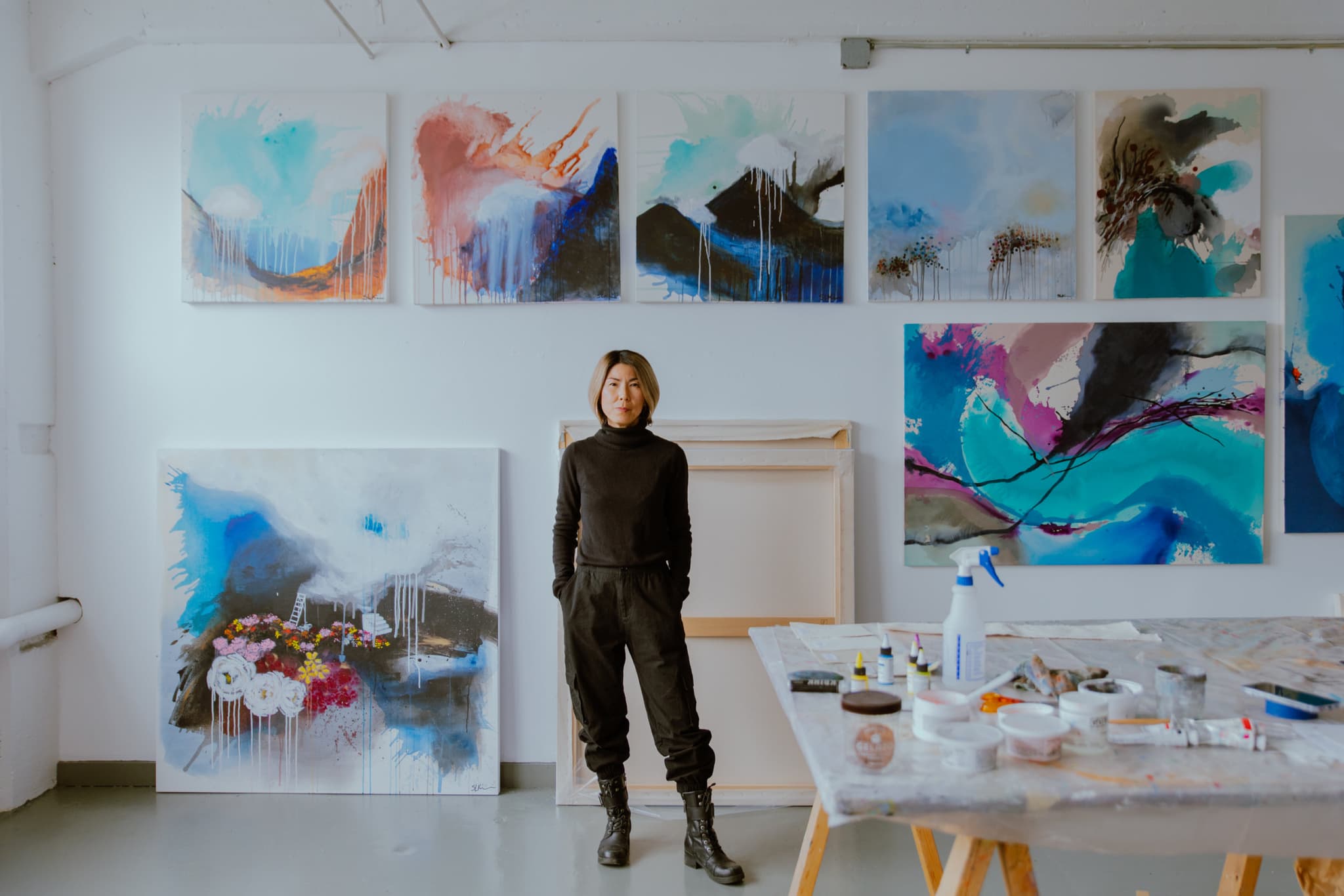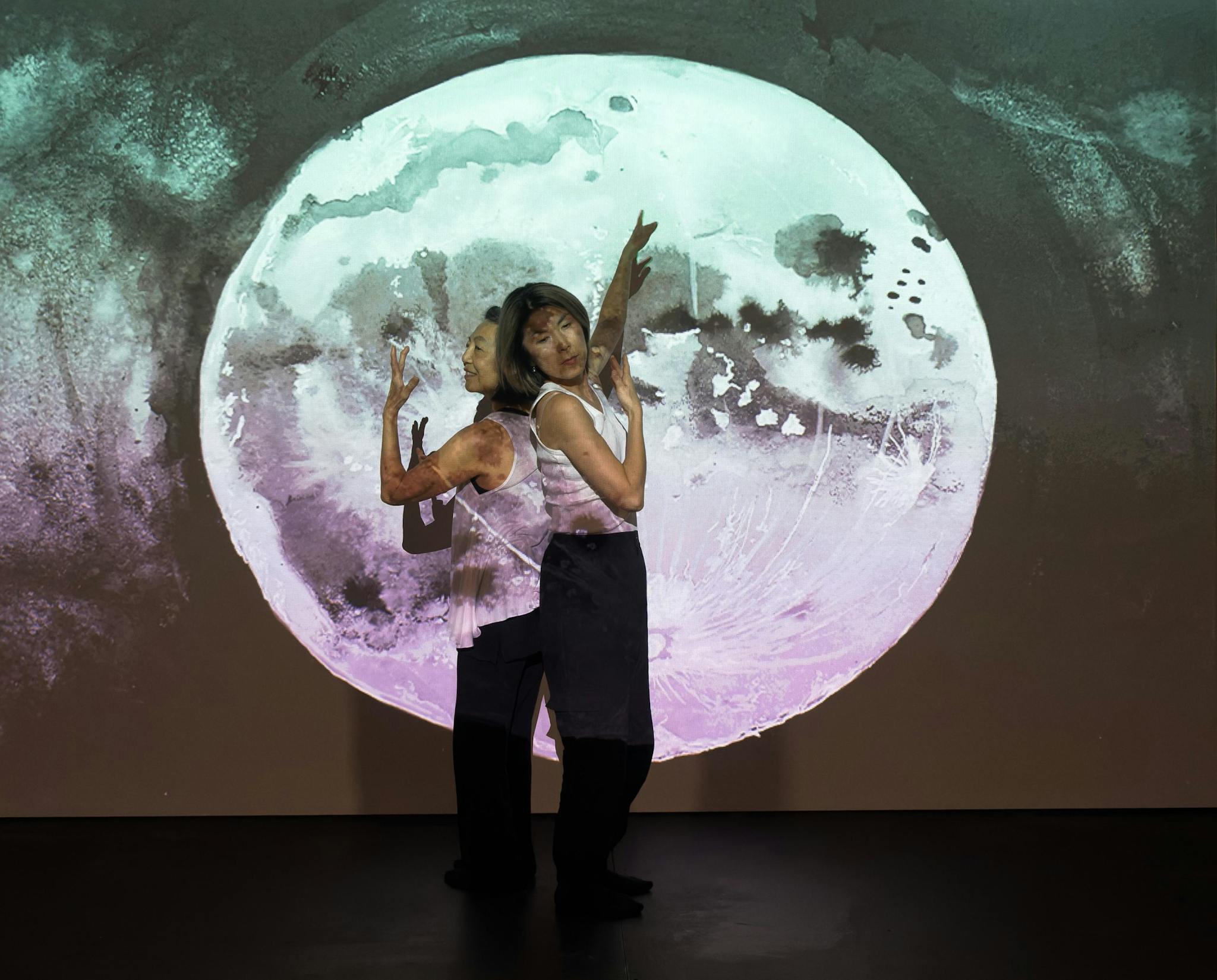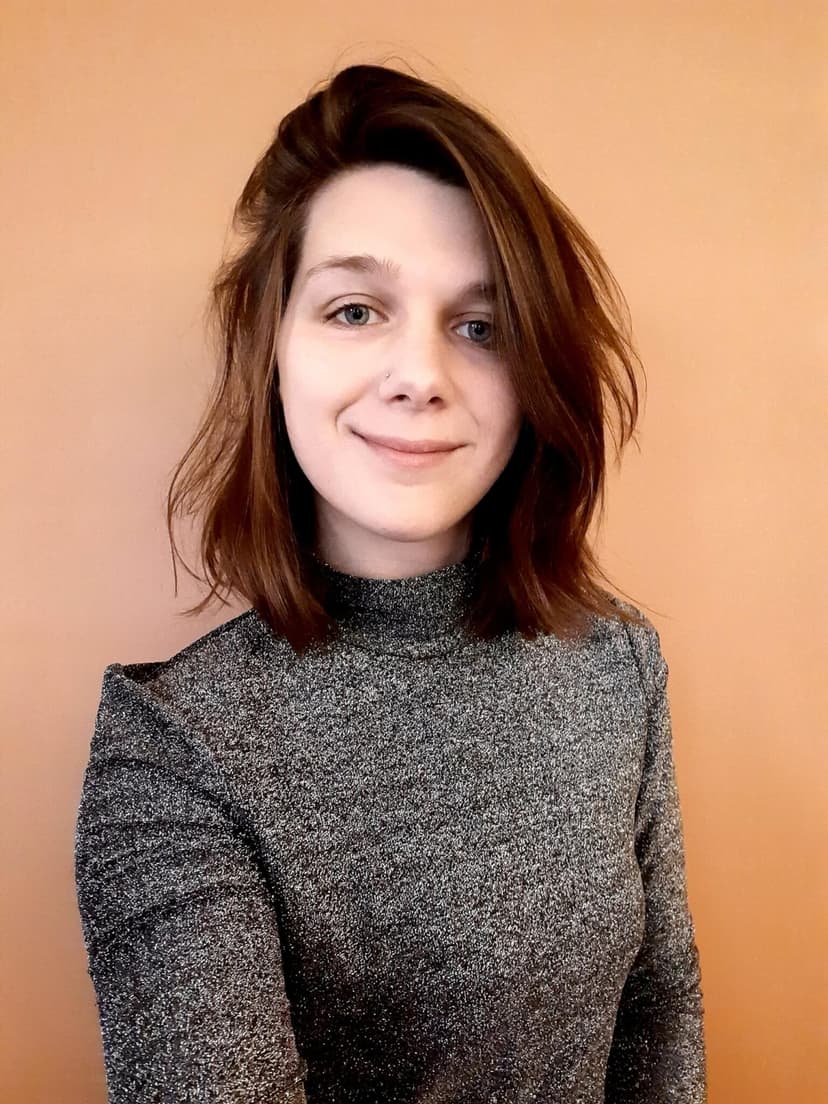Whether you’ve admired her mural of waves and sea foam outside of Penang Malaysian Cuisine downtown, viewed her collaborative piece in Boston, or caught one of her installations or lectures at various institutions, Soyoung L. Kim’s dynamic, multimodal projects have been an integral part of the city’s art scene for years.
In the past, Kim’s work has involved painting, performance, sculpture, stop-motion animation, and writing. A member of the Korean diaspora—a self-identified 교포 Gyopo—she was raised in Nairobi, Kenya, by parents who lived under Japanese occupation in Korea. Growing up, she was taught history from a colonizer’s perspective at a British school, and this, in tandem with her parents’ stories and her move to the United States, made Kim begin to reflect on power, race, and colonization from a young age.
I sat down with Kim to discuss her newest project, a sixteen-minute film titled GHOST ROOTS: A New 강강술래 Ganggangsullae, which will be presented as part of a site-specific installation at Pao Arts Center September 22 through December 3. This three-act piece, a collaboration with dancer and choreographer Fernadina Chan, incorporates dance, narrative, and visual art. Based on the ancient Korean dance traditionally performed by women under the largest full moon of the year, the film is a modern retelling inspired by images of women dancing that filled Kim’s head during the pandemic.

Soyoung L. Kim in her studio. Photo by Mel Taing. Courtesy of the artist.
For Kim, “[the idea] kept coming up,” she shared, but the vision quickly evolved from something for her personal practice into an offering for her community. “With all of the violence towards Asian elders and Asian women,” Kim explained, “I wanted to create this space where people could come and feel safe and also to care for one another and to heal and to celebrate as well.”
GHOST ROOTS begins with Kim standing in front of a black background wearing a bright white shirt. In direct address, she explains the origins of Ganggangsullae, stressing its context, that this festival was about women telling their stories in “a hierarchical, male-dominated society.” When we spoke, she told me, “It was a moment in the community where women could come out and play. There is a woman who is singing and the women in the community are dancing to her singing. She is singing about their lives but she is also singing about sad things too as well as funny and celebratory things. And that is mixed in there too because that is life.”
After Kim links the historic dance to the present context of anti-Asian hate and violence in the United States she previews the three acts. During transitions, Kim’s voice and black painted words tell us “Our lands don’t forget, our bodies don’t forget,강강술래.” Instruments screech and the screen fades. Act one begins and Chan now stands in a white shirt against a black background, looking into the camera.

Fernadina Chan (left) and Soyoung L. Kim (right) performing GHOST ROOTS: A New 강강술래 Ganggangsullae (2022). Photo by Albert Wong. Courtesy of the artist.
The first segment of the film is about storytelling, feeling almost like an introduction. Through individual personal narratives, told to the camera, both women touch upon the themes of identity, history, connection, and family in local and global contexts. Chan’s looks at Japanese colonization, family stories, and exploitative Chinese labor in North and South America.
Kim’s portion, act two, makes use of descriptive metaphors, alluding to the Korean war and partition as well as intergenerational connections, “the echoes of my ancestors’ voices inside me,” she says, “their memories giving birth to my memories, flowing waves carrying me forward.” Some parts of the narratives feature mixed media, such as pictures of family and animated paintings of trees and roots climbing up the screen.
In the making of GHOST ROOTS, Kim and Chan each wrote their stories first. As Chan is primarily a dancer, Kim supported her and rearranged her passages to find a rhythm like spoken word. At the same time, Kim was careful to keep Chan’s words as her own: “It was important to me that she write her own pieces,” she explained, “and I retain her voice.” Kim was also excited to bring herself into the piece through writing: “Right now I am at a moment in my art practice where I am drawing off both my visual art practice and writing practice and I feel like it is coming all together.”
Next, they began to work on the choreography. Chan decided to start with both women making natural movements. “There was a lot of improvisation in the beginning when we came together,” Kim shared. Finally, Chan and Kim incorporated traditional dance movements from Ganggangsullae. In our conversation, Kim emphasized that with all art forms involved, “it wasn’t one of us doing separate things but we were both involved in all aspects.”

Soyoung L. Kim at work in her studio. Photo by Mel Taing. Courtesy of the artist.
Act three involves a combination of dance, animation, and storytelling. Using an audio overlay, short phrases, said together or separately, and stories give context to their dance movements and the animation, projected behind them on a white screen. The viewers have some background to both Kim and Chan and are now watching them in community with each other through their physical interactions and the mixing of animated images. Every so often, you can hear a series of notes played on a gayageum. During this act, there is a shift towards connection. The storyteller’s dance movements are done in two parts with the other dancer. We see them at times as distinct, at one point in the dark under spotlights, and together, through touch, leaning, collective dancing, and linking arms. They invite us: “Come join our circle.” In the finale, a video of a moon being painted is projected while the women dance, still together yet moving as individuals.
In GHOST ROOTS, viewers experience the motion and style of Kim’s visual art and the intimate and expansive choreography of Chan. Heavily influenced by their stories, the motions of both art forms signal transitions and visualize metaphors used in the narratives. It is a reminder of the ancient aspects of community care and the assurance and identity found in storytelling.
The opening reception for GHOST ROOTS will take place at the Pao Arts Center on September 22 from 6-8 PM and will feature an art gallery with all new works based on the film as well as a conversation between Soyoung Kim and Yng-Ru Chen, founder of Praise Shadows Gallery. The closing reception will be held on December 3 at 5 PM. For updates on the exhibition, gallery hours, and more information about additional screenings, visit www.paoartscenter.org




